By now, you surely have seen incredible photos and abundant news articles about comet NEOWISE. The hype around this comet is huge, and rightfully so. While not as bright (or visible to the naked eye) as 1997’s famous Hale-Bopp comet, NEOWISE is easily visible with binoculars, telescopes and a camera. That’s not to say you can’t see it with the naked eye, but it is faint, and will be particularly hard to see in a location with a lot of light pollution. But whether you are a photographer or not, this comet is an incredible site to see. Don’t make excuses and think you can catch it next time it comes back, because you will be waiting a long time…6,800 years to be exact!
So grab that camera and those binoculars and let’s take a look at how to find and photograph NEOWISE.
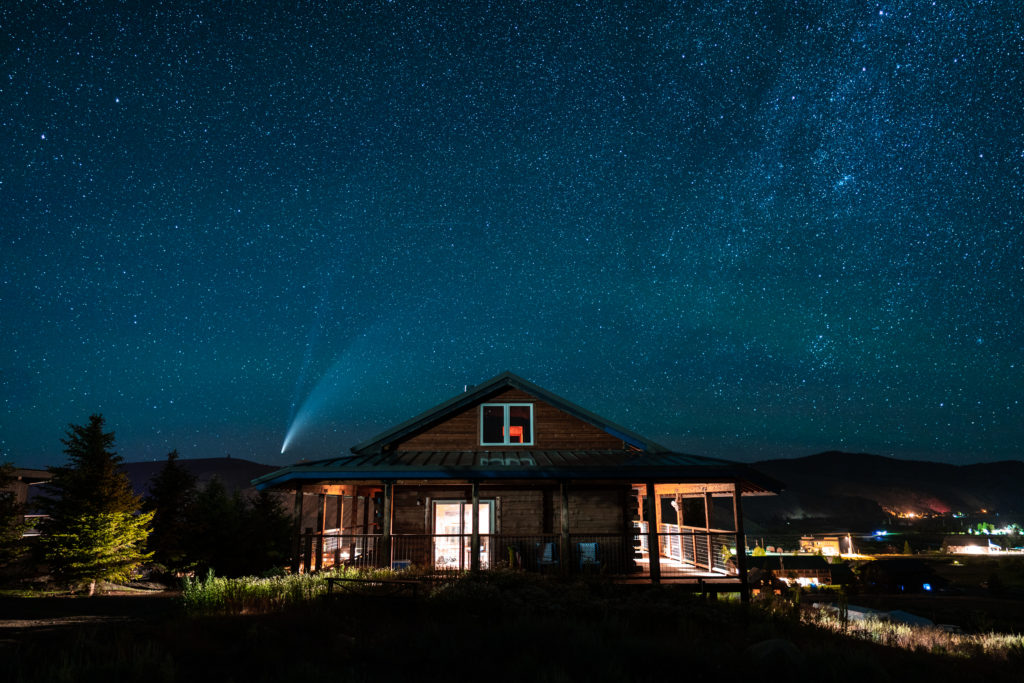
Finding Comet NEOWISE
Even though comet NEOWISE isn’t very visible to the naked eye, with a little planning, you should have no problem finding it. While last week the comet was only visible in the pre-dawn hours before sunrise, now the comet can be seen through the early evening, shortly after sunset. No need to wake up early to get a view of the comet!
This week, the comet will be in the Northwest sky, unlike the pre-dawn hours of last week when it was in the Northeast sky. The best time to view it would be 30 minutes after sunset and beyond. As the daylight begins to fade, the comet will become more visible, but I would suggest arriving at your viewing location no later than 30 minutes after sunset to make sure you watch the comet come to life before your eyes.
Once in position, look to the Northwest sky. Once the stars begin to appear, focus your attention on the stars that make up the Lynx constellation. Don’t know where the Lynx constellation is? Have no fear, there’s an app for that! Actually, like 284 apps, but maybe the most popular is SkyWalk. Simply open the app, click on the compass on the top left of the screen to start your augmented reality night sky viewing! To find the exact location of NEOWISE, click the magnify glass icon in the bottom left hand corner and simply type in NEOWISE. Once selected, the app will focus on the comet for you. You can also use the camera button in the upper right hand corner to see the star constellations and NEOWISE overlayed on what your phone camera is currently seeing.
Now the tricky part. If you want to plan your NEOWISE photograph for the future, StarWalk doesn’t have an option to change the augmented reality date and time, at least not that I have found. So as a workaround, simply change the phone’s date and time to the future and you can see exactly where in the sky in front of you NEOWISE will be on the selected date and time.
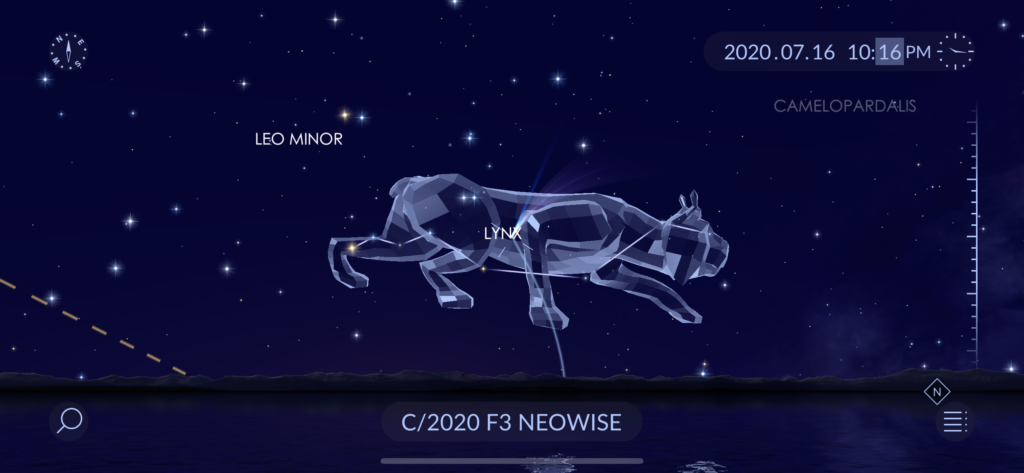
How to Photograph Comet NEOWISE
Allright, you found the comet! Time to get your camera gear out and get some photos of this incredible space event. Here are a couple of tips to help you get those awe-worthy exposures that will have all your followers on Instagram drooling.
Find a Dark Location
As with any astrophotography, the most crucial key to getting stunning exposures is to get away from the light soaked cities. Nothing kills an eyes view of stars like man-made light sources. Drive out of town, head to the mountains, the desolate coast, or any other place far away from light pollution. Now, this isn’t to say that you can’t see or get photos of the NEOWISE over cities, quite the opposite. I have seen some great shots of the comet over cities, so if it’s not feasible to escape the city or if you have a certain city composition in mind, by all means, get it! But, the less light pollution, the brighter the comet will look. Plus, with no moon in the early evening for the next ten days, you can get a ton of stars to surround NEOWISE in your photo, so why not get out into nature?
Find a Foreground
If you just want to get close up photos with a telephoto lens of NEOWISE, than really anywhere without an abundance of light pollution will do. But to really make your comet photo pop, find an interesting foreground. If you don’t believe me, check out this photo from Joshua Tree National Park by Jack Fusco, or this shot from Saguaro National Park by Mike Mezeul II. Or better yet, get really creative and find yourself an astronaut wandering around in the desert night like Andrew Studer and Taylor Gray did! Still not epic enough? Why not get a selfie in front of the NEOWISE comet…with a side of Northern Lights? Leave it to Paul Zizka to capture what is my favorite NEOWISE photo by far!
The point is, getting a photo of the comet is great, but if you really want to capture something unique, than add some interesting foreground elements to your photo. But since there will be no moon to light up the landscape, utilize silhouettes such as trees or sharp mountain peaks, or the more Photoshop inclined, make sure to get some blue hour foreground photos that you can use to composite with your night images of the comet.
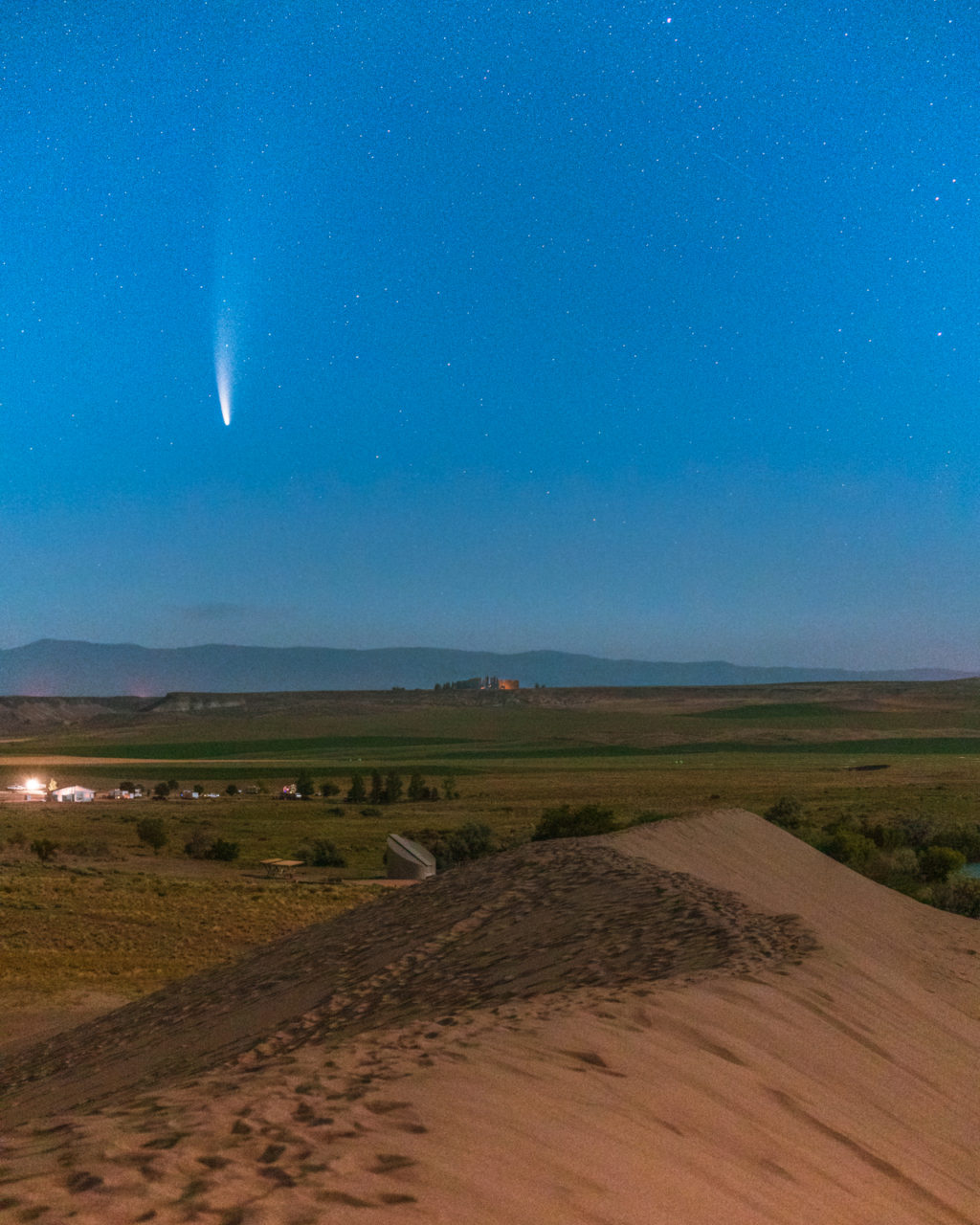
Long Exposures Isn’t Always Better
Just because a comet isn’t a star doesn’t mean it’s not moving in the sky. Also, even though you feel stable when you are standing, doesn’t mean that the earth isn’t rotating under your feet. So, with that known, a long exposure photograph may wind up giving you blurry stars and a very blurry NEOWISE comet. In order to avoid this, make sure your exposure time is less than what your lens can handle. The quick math equation to figure out how long your exposure should be is this. Look at the focal length that you are shooting at, and divide that into 500 (some say 600, but I usually live by the 500 rule.) Whatever the number is, that should be the max length of your exposure. For instance, if I was using my favorite lens, a Sony 24mm f/1.4, the equation equals just over 20, which means I want to keep my exposure at 20 seconds or less. Following this simple rule will help make sure you get the sharpest possible NEOWISE comet shot!
Use Different Focal Lengths
Using a telephoto lens will make the comet look bigger and more intense against the foreground. But that doesn’t mean that a wide angle shot can’t give you a dramatic landscape photo that really makes the viewer feel like they are standing on that mountain top (or in my case, a well trampled sand dune) taking in the beauty of NEOWISE.
In reality, you can photograph the comet from 16mm to 600mm. There is no wrong or right focal length and each focal length will give you very different scenes. And unlike the short time window a sunrise or sunset might give you, you should have up to a couple of hours to photograph NEOWISE as it makes its trek across the night sky, so play around with an array of focal lengths and compositions.
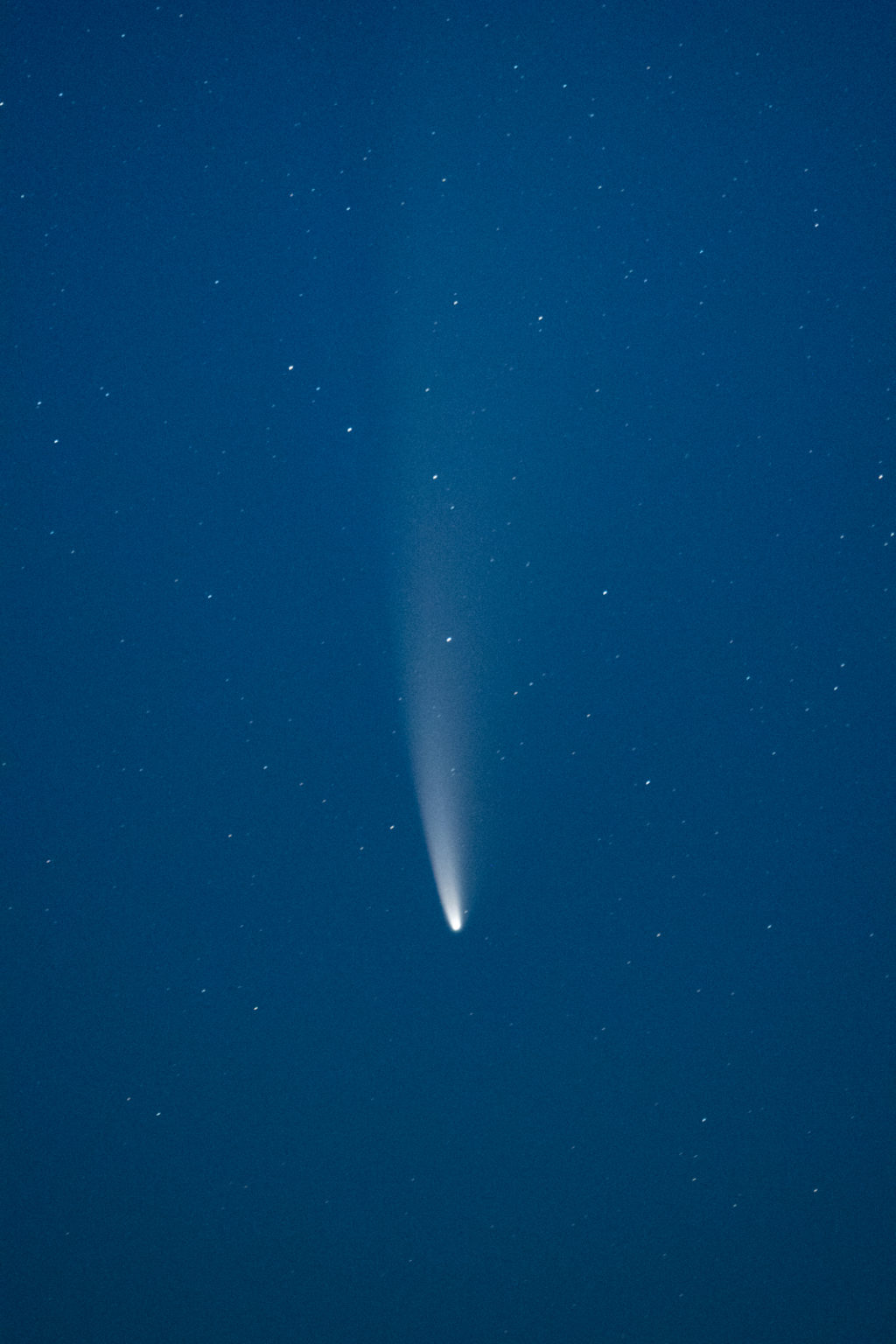
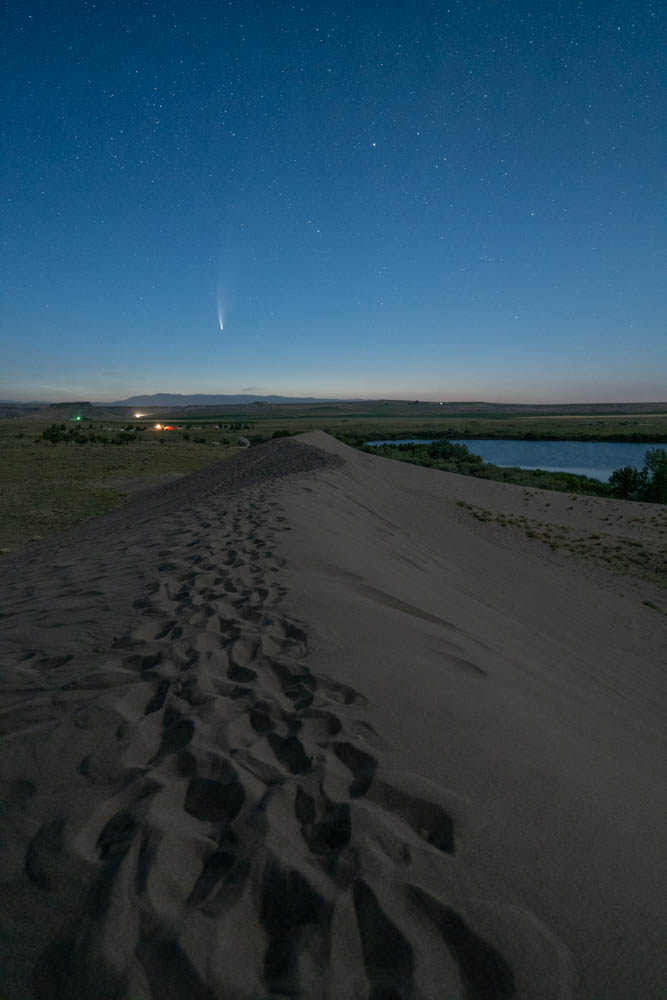
Get Yourself in the Shot!
Getting photos of the comet is great and all, but don’t you want to really impress the grandkids in a couple of decades? Than use this opportunity to practice your self-portraits. If you have an older DSLR camera, than you can use a wireless remote to trigger the shutter as you take your position away from the camera. On newer cameras, like my Sony A7rIII, there is an app where you can trigger the remote from your phone. Like Paul Zizka and Jack Fusco show us in these incredible photos, you will most likely have to silhouette yourself. Put the camera below you and stand or sit somewhere which will put your entire body against the night sky and hit that shutter with your phone app or wireless trigger. Keep in mind, it’s a long exposure, so hold your breath and don’t move for the length of the exposure.
If you don’t have a wireless remote, you can set your camera to a 10 second timer and quickly run into position. But please be careful, as running in the dark can lead to trips, which you especially don’t want if you were where Paul Zizka was sitting in the above photo.
So there you go. How to find and photograph NEOWISE comet! Do you have questions about how to find or photograph NEOWISE? Shoot me an email and ask! Once you photograph this amazing scene, send me the photo on my Instagram so I can check it out!


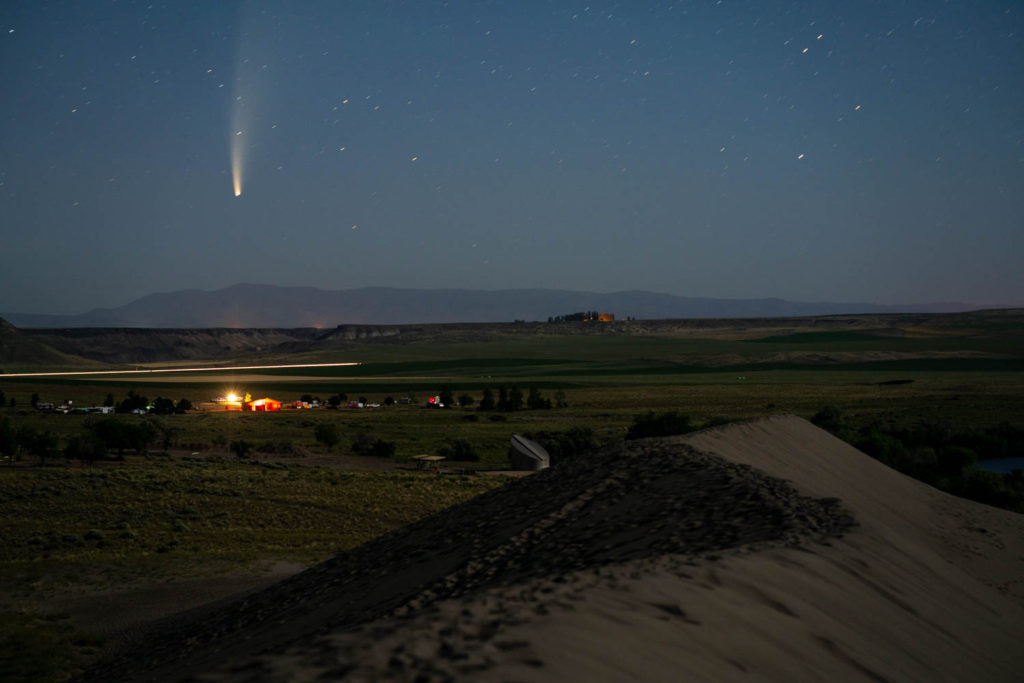
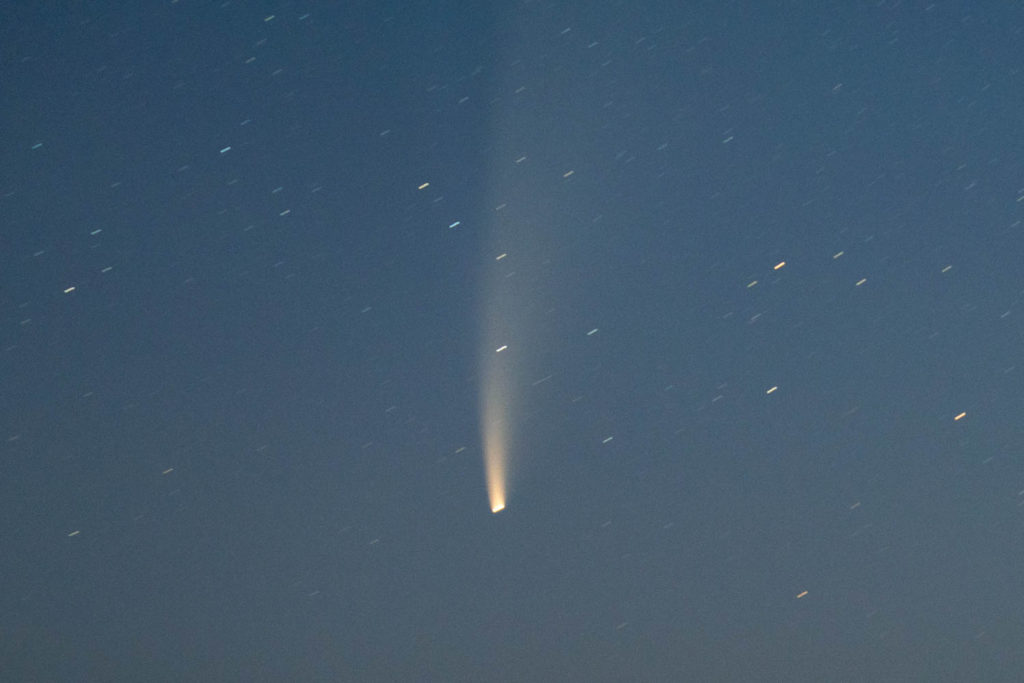
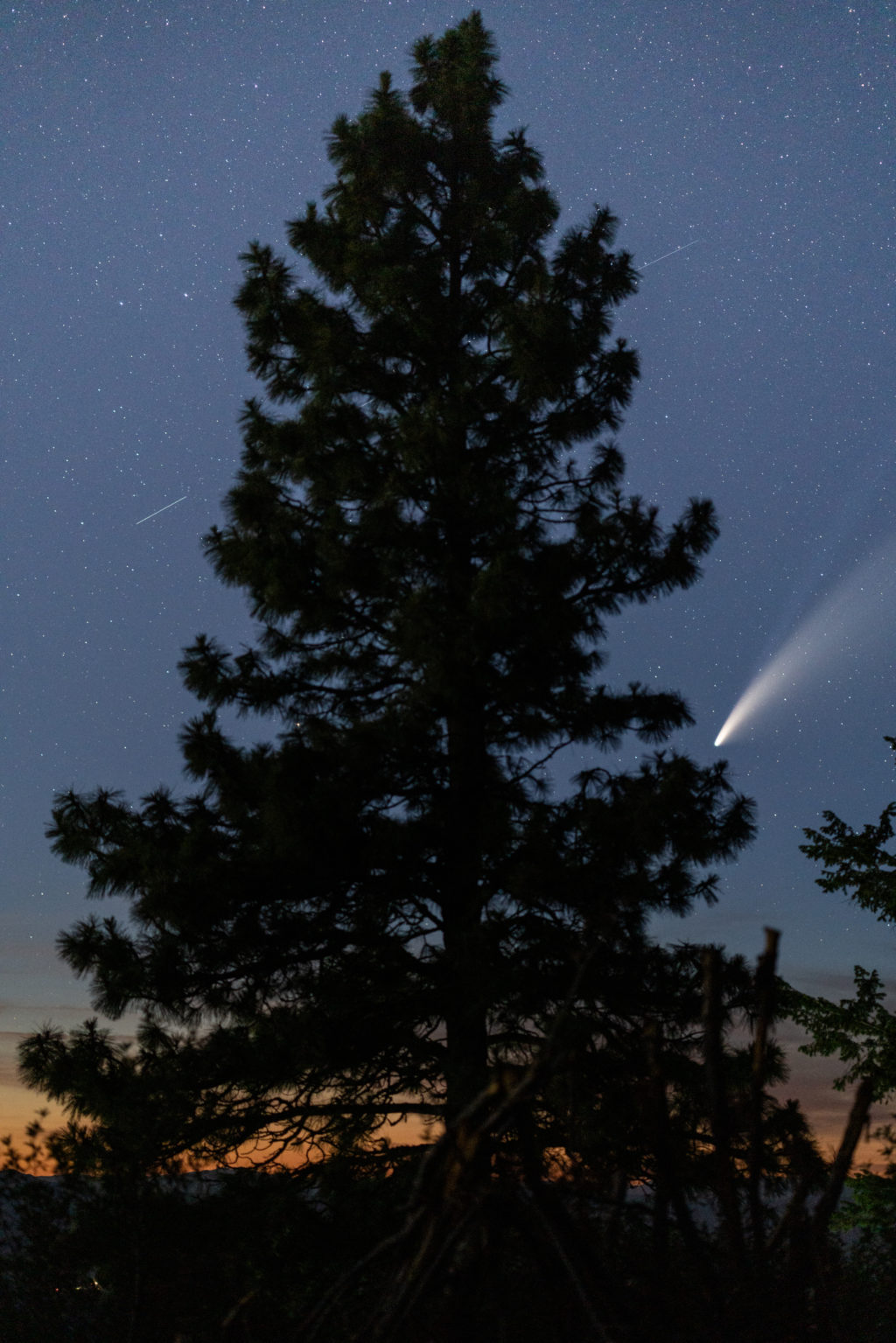
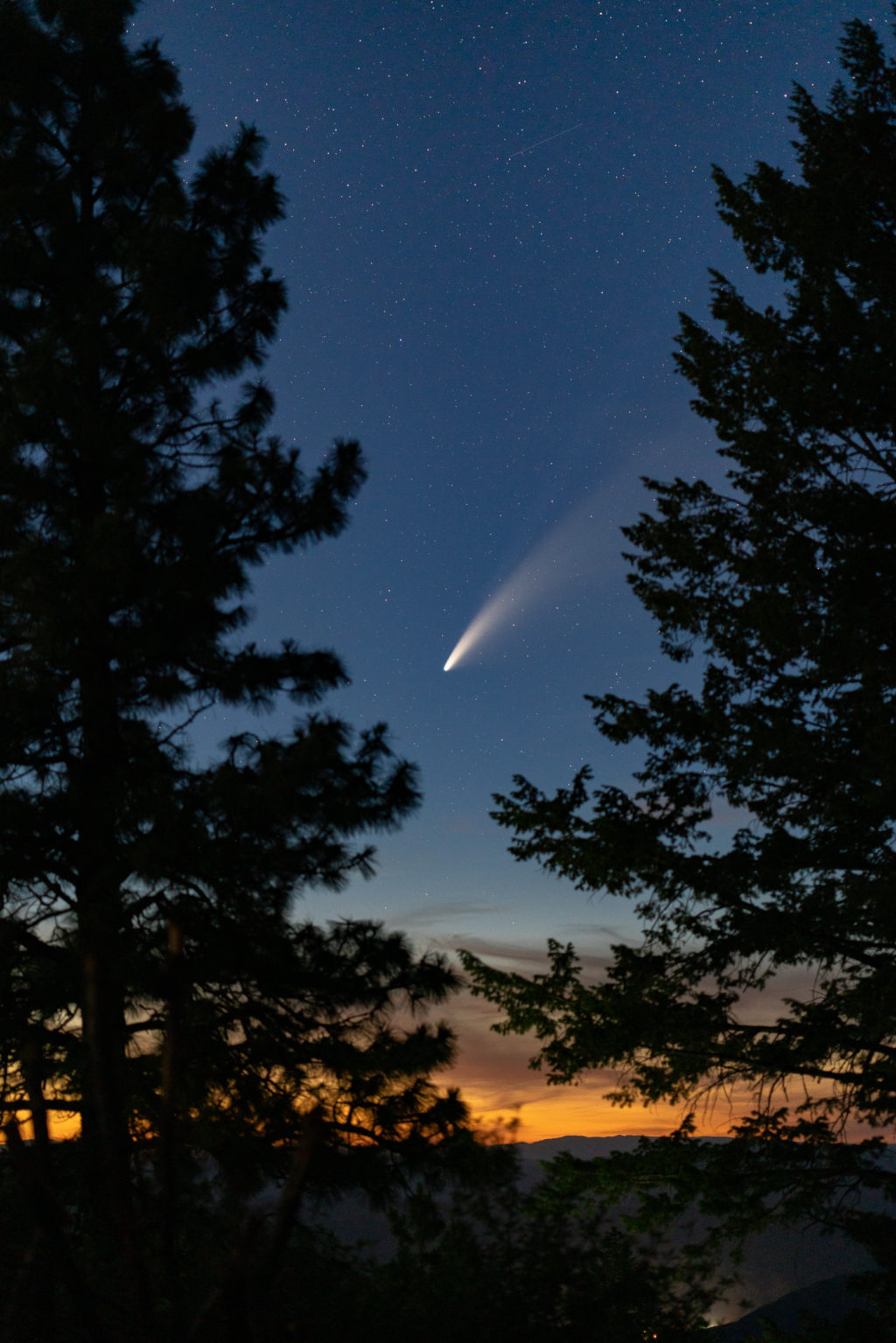
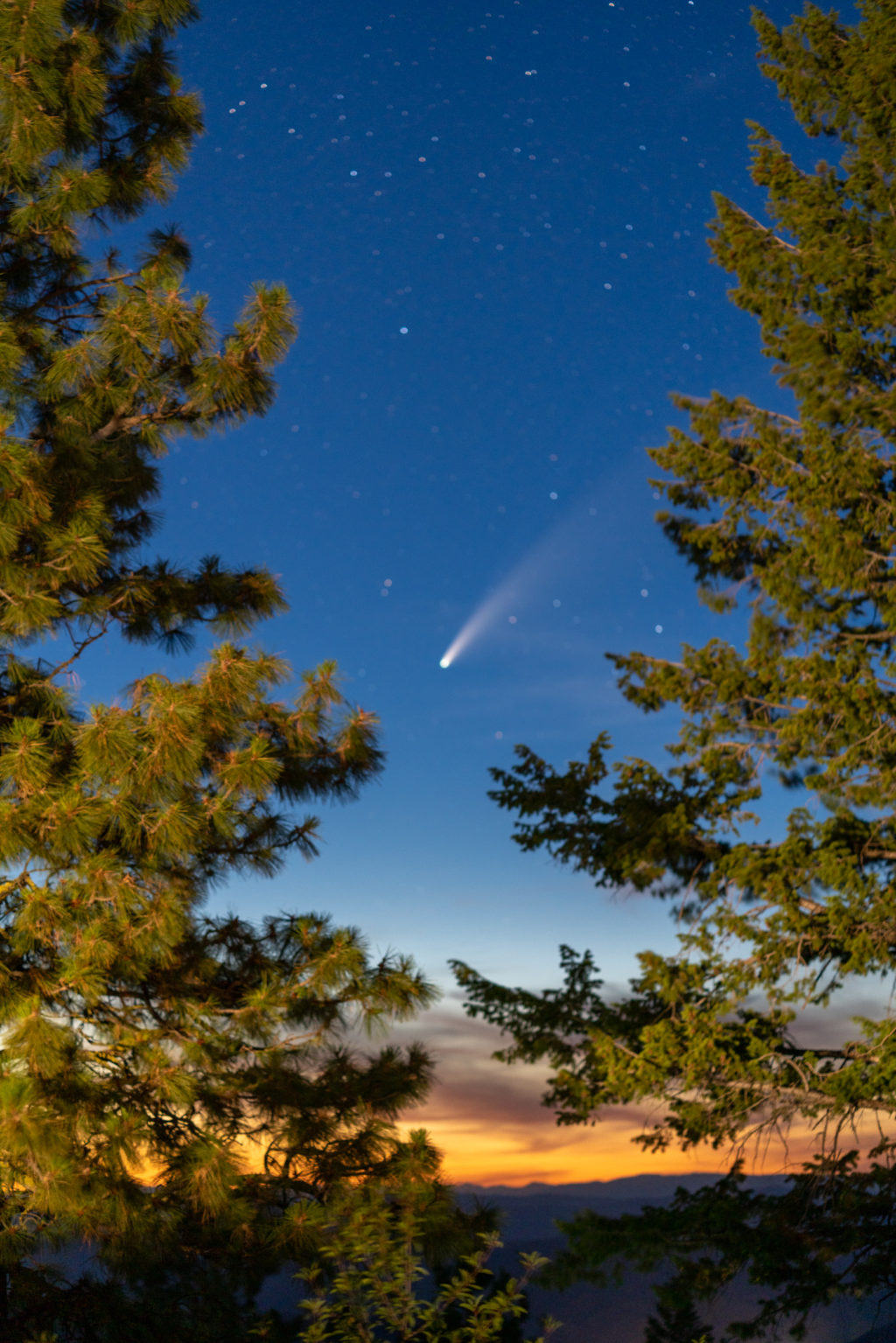
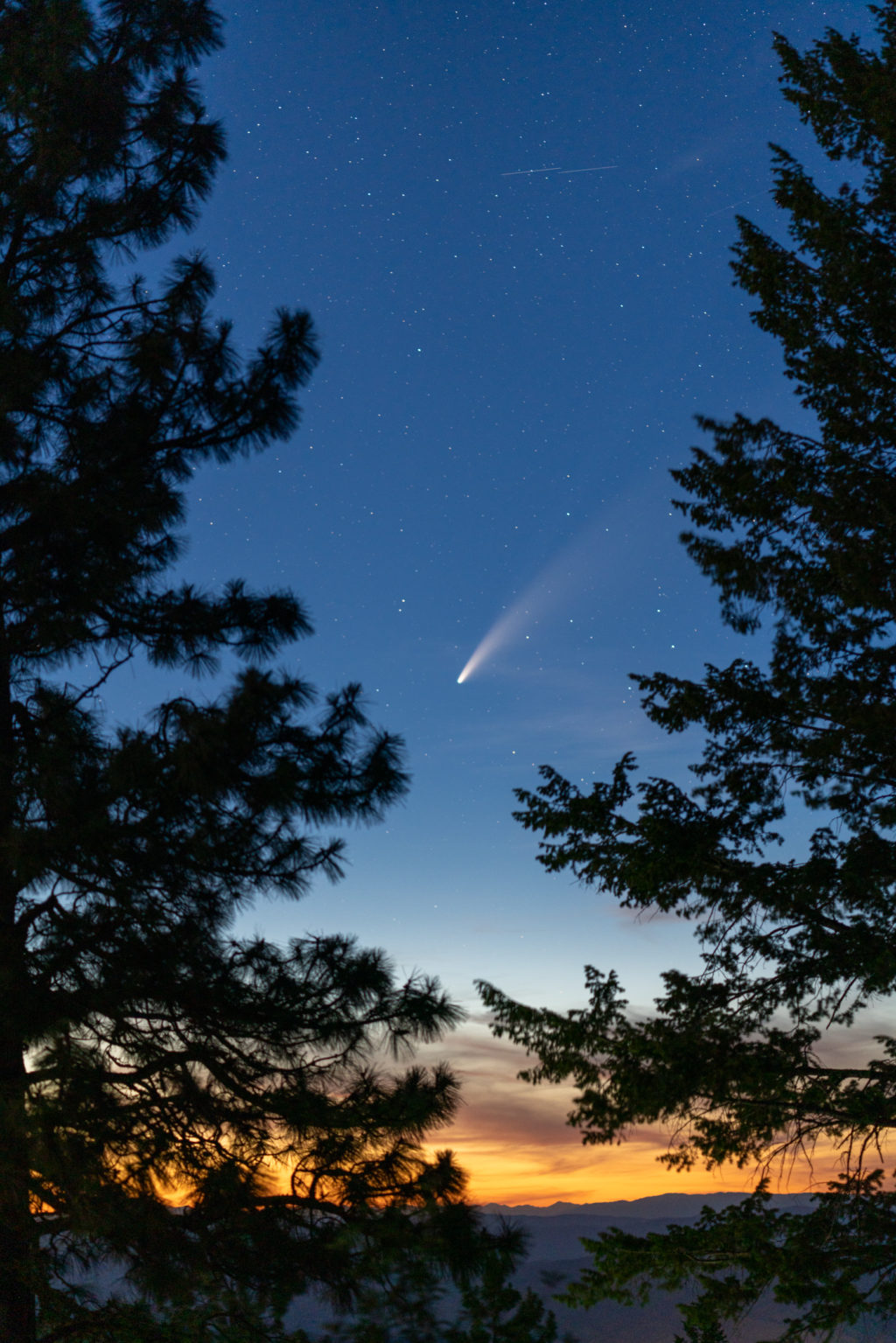
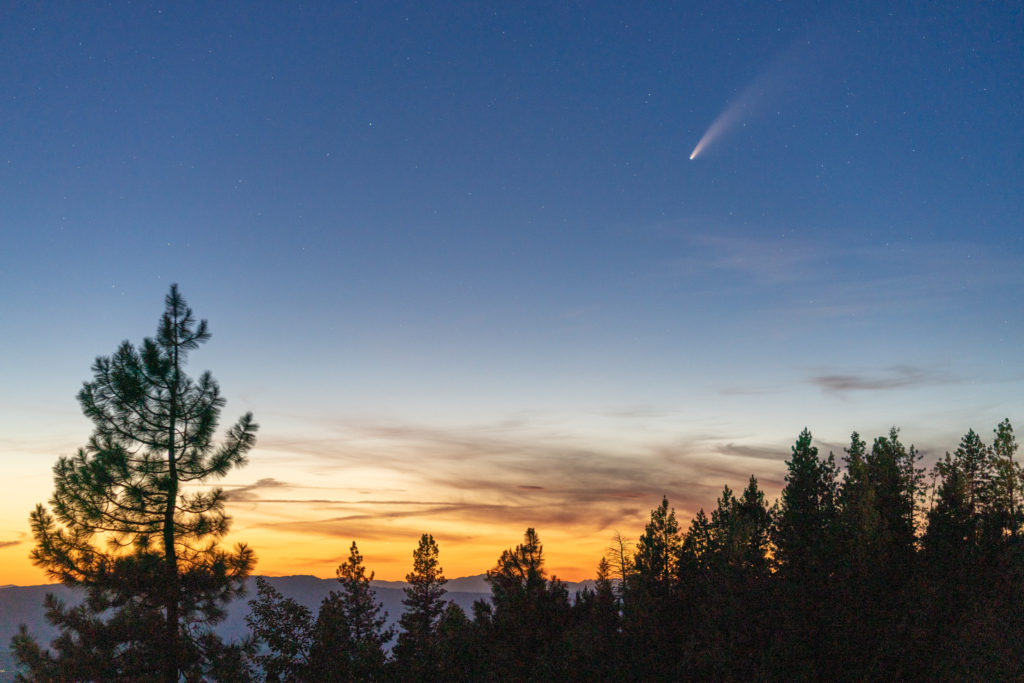
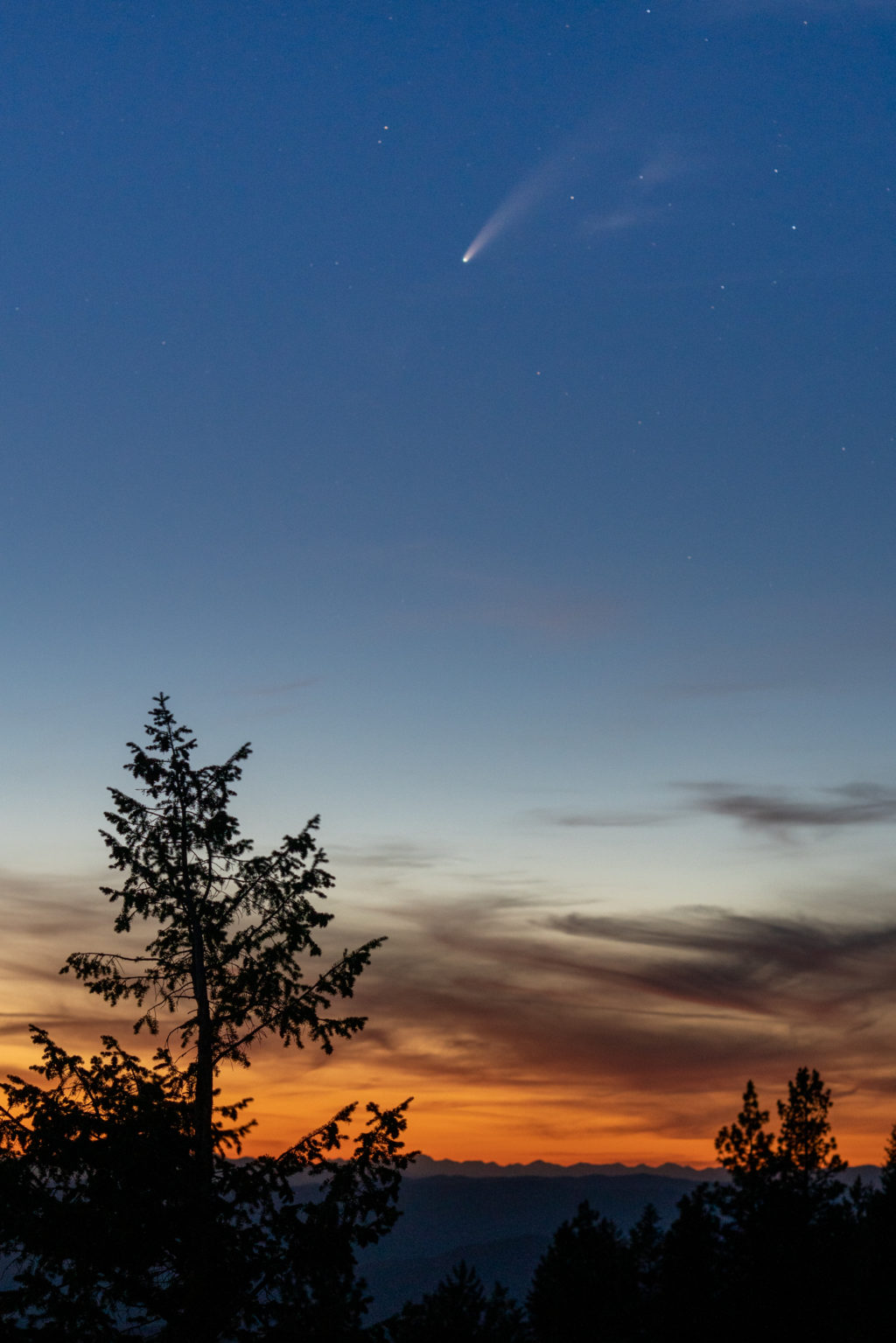
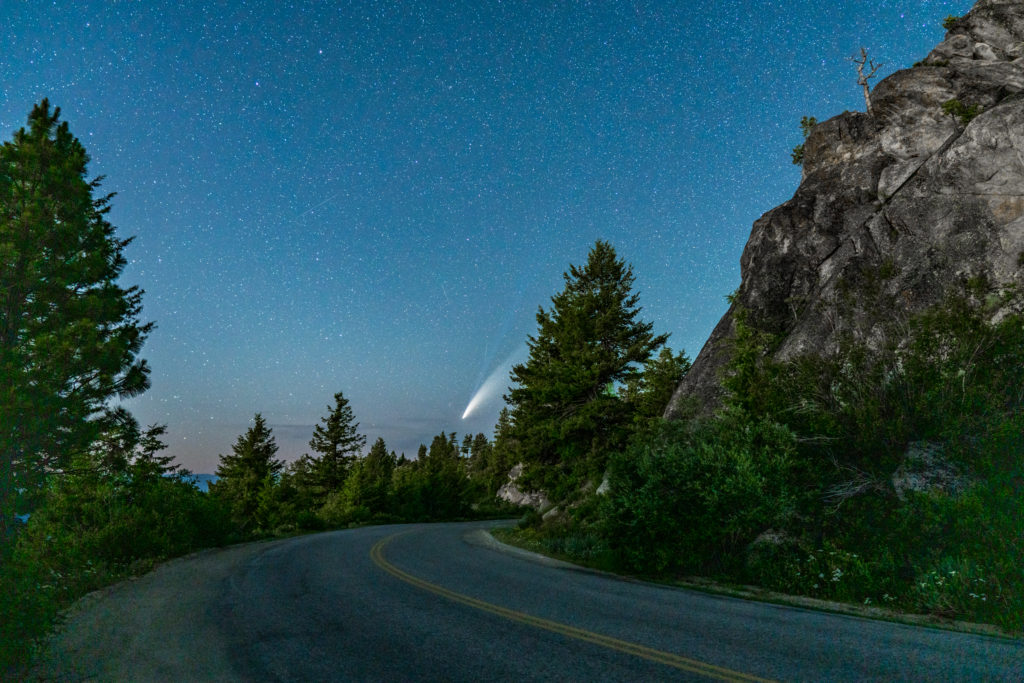
6 comments
Your photos are beyond beautiful and your article is exactly what I need to read, Michael. I’m also channeling our conversations from the Lake Attilan dock a year ago as I set up my camera, getting ready for tonight’s dark sky. I’m starting out with the Rokinon 24mm, f1.4 lens, 20 seconds or less.
I’ve been hunting for Neowise for a week with no luck yet, but hopeful about seeing it tonight or in the pre-dawn morning. Looks like we’ll have clear sky here in swPA. Here’s hoping!!! Always grateful for your camera advice!
wj05s3
d4ynrl
s520mw
zjkiqm
damxpq